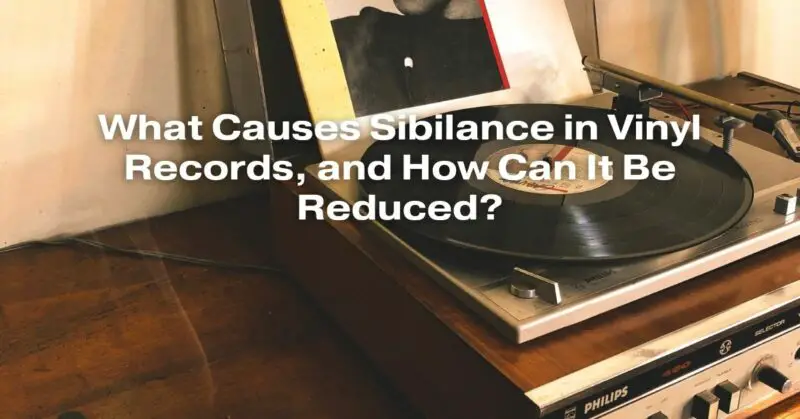Vinyl records, cherished for their warm sound and nostalgic appeal, can sometimes suffer from an issue known as sibilance. Sibilance refers to the hissing or sharp “s” and “sh” sounds that occur during playback, often affecting the overall listening experience. In this article, we will delve into the causes of sibilance in vinyl records and explore effective techniques to reduce this problem, allowing enthusiasts to enjoy their favorite music without distortion.
Causes of Sibilance in Vinyl Records
- Poor Recording and Mastering: Sibilance can originate during the recording and mastering process. If the recording equipment isn’t of high quality or if the mastering engineer doesn’t manage the sibilant frequencies properly, it can result in exaggerated “s” sounds on the vinyl.
- Inadequate Cartridge Setup: Vinyl playback systems comprise various components, including cartridges and tonearms. If these components are not set up correctly, they can misread the groove and emphasize sibilant sounds.
- Worn-out or Dirty Styli: The stylus, the needle that reads the grooves, can wear out over time. A worn-out stylus or a stylus covered in dust and debris can mistrack the groove, leading to sibilance issues.
- Poor Pressing Quality: During the vinyl manufacturing process, if the pressing quality is subpar, it can result in uneven grooves. These irregularities can cause the stylus to jump or skip, producing sibilant sounds.
- Surface Damage and Contamination: Scratches, dust, or other contaminants on the surface of the vinyl can cause mistracking and sibilance. Even small particles can interfere with the stylus’s ability to accurately read the grooves.
Reducing Sibilance in Vinyl Records
- Invest in Quality Vinyl Pressings: Opt for records pressed by reputable manufacturers using high-quality materials. Quality pressings are less likely to have surface irregularities that lead to sibilance.
- Proper Cartridge Alignment and Calibration: Ensuring that your cartridge is properly aligned and calibrated according to the manufacturer’s specifications can significantly reduce tracking errors and, consequently, sibilance.
- Regular Maintenance: Clean your records regularly using a carbon fiber brush or a record cleaning machine. Similarly, keep your stylus clean to prevent buildup, which can cause mistracking and sibilance.
- Upgrade Your Equipment: Investing in a high-quality turntable, cartridge, and tonearm can make a significant difference. Higher-end components are often engineered to minimize tracking errors and provide a more accurate reproduction of the recorded sound.
- Professional Cleaning and Restoration: If you have valuable vinyl records suffering from sibilance, consider professional cleaning and restoration services. Experts can clean deeply ingrained dirt and repair minor scratches, enhancing the overall sound quality.
- Digital Restoration: In extreme cases, digital audio software can be employed to reduce sibilance. Audio editing tools can identify and attenuate sibilant frequencies, although this method is generally reserved for valuable recordings where other options are not feasible.
Conclusion
Sibilance in vinyl records can be a frustrating problem, but with the right knowledge and care, it’s manageable. By investing in quality equipment, maintaining your vinyl collection, and understanding the intricacies of the recording process, you can significantly reduce sibilance and preserve the integrity of your favorite music on vinyl. With these techniques, enthusiasts can continue to indulge in the rich, analog sound that vinyl records offer, free from distracting hisses and pops.

